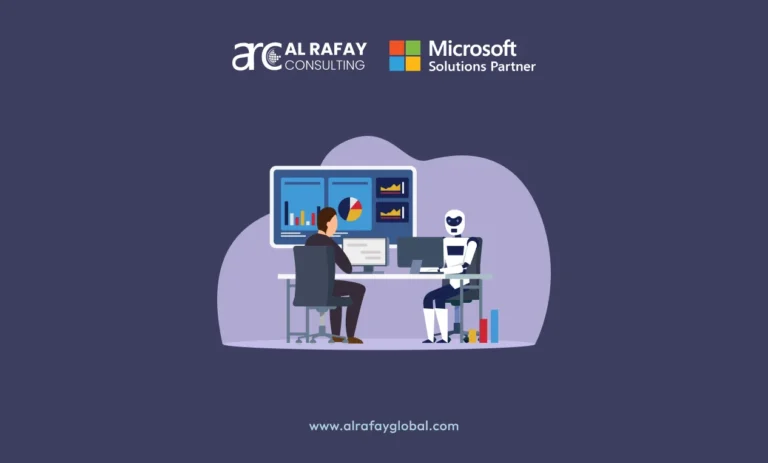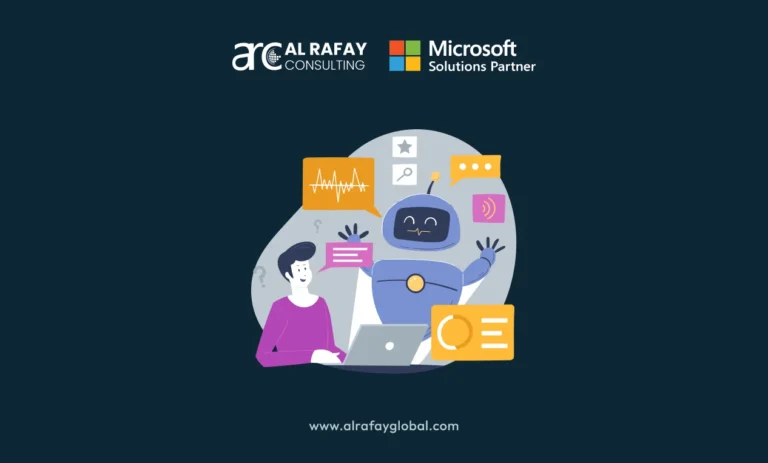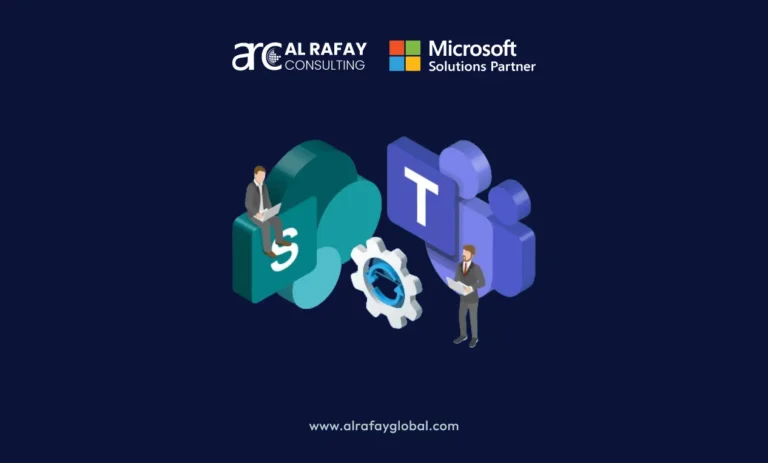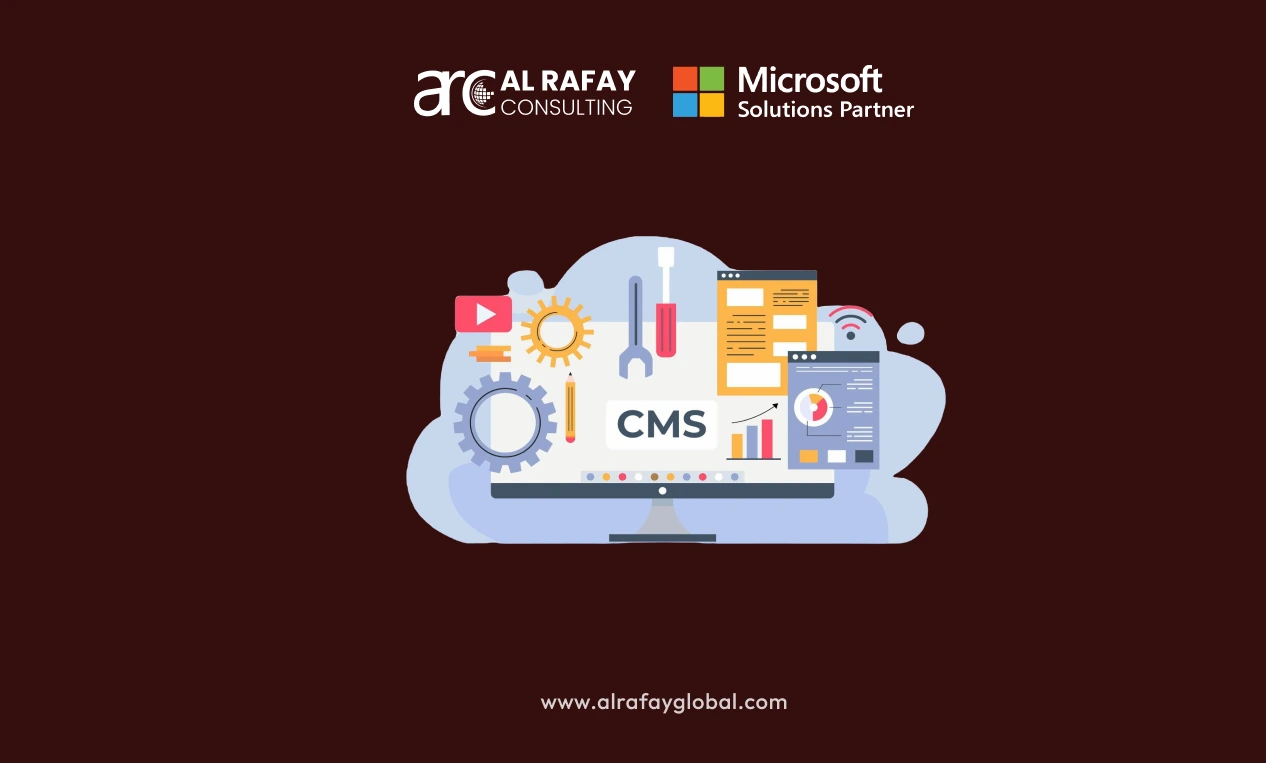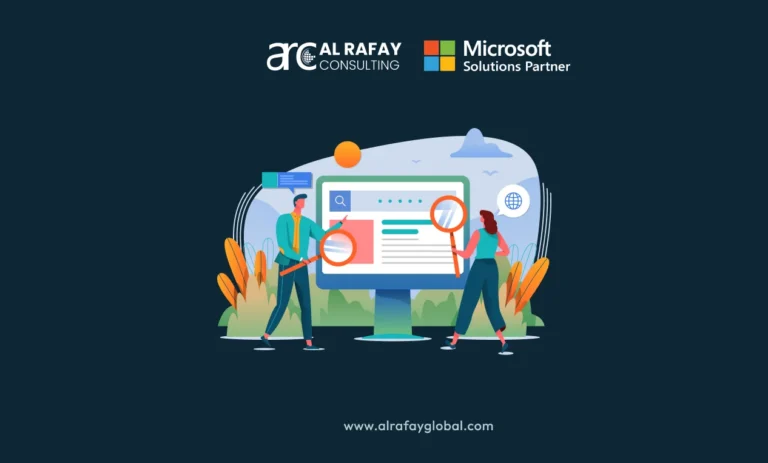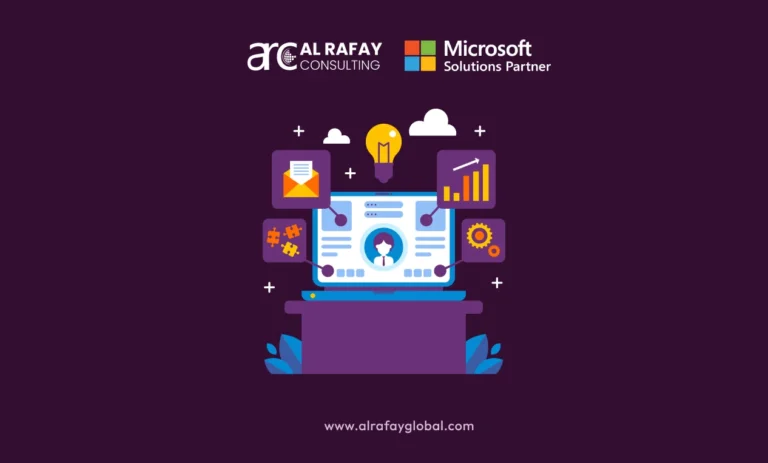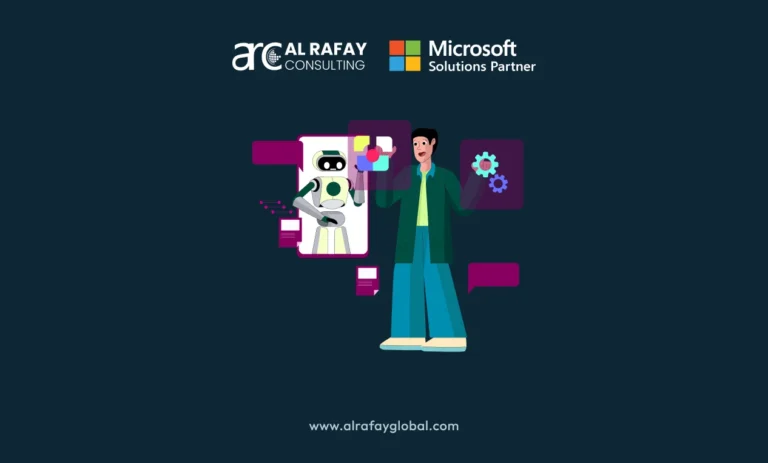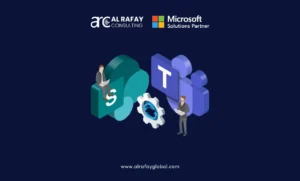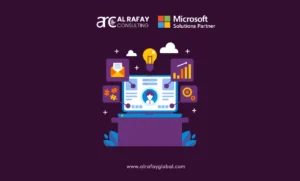In today’s digital landscape, businesses are generating and consuming content at unprecedented rates. From documents and emails to multimedia files and web content, the volume of information that modern enterprises must manage continues to grow exponentially. This explosion of data poses significant challenges to organizations, including how to efficiently store, retrieve, and secure their information while ensuring compliance with regulatory standards. According to a report by Fortune Business Insight the ECM market is expected to expand to USD 150.97 billion by 2032.
Enterprise Content Management (ECM) is a solution that addresses these challenges by providing a comprehensive system for managing an organization’s digital content throughout its lifecycle. ECM empowers businesses to organize, store, and distribute content efficiently, ensuring the right information is available to the right people when they need it. As enterprises navigate their digital transformation journeys, ECM becomes essential for ensuring streamlined operations, improved collaboration, and enhanced decision-making capabilities.
The objective of this blog is to provide an in-depth explanation of ECM, covering its key components, benefits, technologies, and best practices. By the end, you’ll have a clear understanding of how ECM can revolutionize your business operations and content management strategies.
Understanding Enterprise Content Management (ECM)
Enterprise Content Management (ECM) refers to the strategies, technologies, and tools used to capture, store, manage, and deliver an organization’s content and documents. This content may be structured (organized in databases) or unstructured (free-form documents, emails, multimedia, etc.). ECM provides a unified system for managing all types of content, improving accessibility and usability across the organization.
In contrast to traditional document management systems that focus on storing and organizing physical documents, modern ECM solutions are designed to manage a wide variety of digital content types. ECM also incorporates advanced features such as workflow automation, compliance management, and version control to enable smoother collaboration and better decision-making processes.
Types of Content Managed by ECM
ECM systems are designed to manage both structured and unstructured content. Structured content includes organized data such as spreadsheets and databases, while unstructured content refers to files like emails, videos, and PDFs that don’t follow a predefined format. This unstructured content represents nearly 80% of the total content produced by most organizations, making its management especially critical.
Here’s a breakdown of the content types ECM systems handle:
Documents: Word files, spreadsheets, PDFs, etc.
Emails: Email messages, including attachments.
Multimedia: Audio, video, and image files.
Records: Official records that need long-term retention.
Web Content: Content from websites and portals.
Collaborative Content: Documents shared and worked on by multiple team members.
Core Functions of ECM
An ECM system typically performs five primary functions:
Capture: Collecting digital content through scanning, importing files, or capturing metadata.
Store: Secure storage solutions for short-term or long-term content preservation.
Manage: Organizing, versioning, and making content accessible across the organization.
Preserve: Ensuring data integrity and protecting records for compliance purposes.
Deliver: Providing the right content to the right users through appropriate channels, such as websites, emails, or business applications.
Key Components of ECM
1. Content Capture
The first step in any ECM system is content capture, which refers to the process of converting paper documents or other physical records into digital formats. Key technologies in this phase include:
Scanning: Converting physical documents into digital files.
Optical Character Recognition (OCR): Extracting text from scanned images or PDFs for searchability and content recognition.
Importing Digital Files: Ingesting already-existing digital content such as emails, PDFs, and multimedia.
Capturing metadata such as author, creation date, and file type is critical for organizing and categorizing content efficiently. This metadata simplifies content retrieval later in the ECM process.
2. Content Management
After capture, content must be organized for easy retrieval. ECM platforms offer several tools for managing content, including:
Indexing and Categorization: Automatically tagging and categorizing content based on predefined criteria.
Version Control: Ensuring that teams work on the latest document version while keeping a history of changes.
Collaboration Tools: Allowing multiple users to edit, review, and comment on documents simultaneously.
Workflow Automation: Automating repetitive tasks, such as approvals, to streamline business processes and reduce human error.
3. Storage and Archiving
ECM provides secure storage for documents and other digital assets, with options for both cloud-based and on-premise solutions. Effective storage strategies are critical for ensuring content remains accessible and protected against data loss.
Cloud vs. On-Premise: Cloud storage provides scalability and remote access, while on-premise solutions offer more control over data residency and security.
Archiving: Long-term storage for content that is no longer in active use but still needed for compliance or historical purposes.
Backup and Disaster Recovery: Redundancy and backup features help ensure content can be recovered in case of accidental deletion, hardware failure, or other disasters.
4. Content Retrieval
Effective content retrieval mechanisms are essential for enabling users to quickly find the information they need. ECM platforms offer:
Metadata-Based Search: Utilizing metadata to filter and locate specific content.
Full-Text Search: Enabling keyword searches within documents to enhance discoverability.
Access Control: User roles and permissions help restrict access to sensitive or confidential content, ensuring that only authorized personnel can view or modify certain files.
5. Distribution and Delivery
The final stage in ECM is delivering content to stakeholders. ECM platforms support multi-channel content delivery, ensuring that information is distributed in the right format to the right people:
Multi-Channel Distribution: Content can be shared via email, web portals, collaboration platforms, or directly integrated into other enterprise systems.
Integration with Third-Party Applications: Many ECM solutions offer integrations with business applications like CRM (Customer Relationship Management) and ERP (Enterprise Resource Planning), enabling seamless workflows across different systems.
The Role of ECM in Business Efficiency
A significant 76% of organizations utilize some form of Enterprise Content Management (ECM), according to a report by MarketingScoop which can include either integrated enterprise platforms or individual, siloed solutions. This widespread adoption highlights the growing recognition of ECM’s importance in enhancing business efficiency and collaboration across various sectors
Improving Document Management
One of the biggest advantages of ECM is its ability to eliminate information silos by consolidating all of an organization’s content in a single platform. This improves:
Content Accessibility: With all documents stored in a central repository, employees can access the information they need faster, regardless of their location.
Streamlined Workflows: Automating routine tasks such as document approvals, routing, and sharing enhances productivity and minimizes manual errors.
Compliance and Risk Management
Enterprises must comply with a wide array of regulations related to data privacy, records retention, and reporting. ECM helps organizations stay compliant by:
Regulatory Compliance: ECM systems include features that help organizations comply with regulations like GDPR (General Data Protection Regulation), HIPAA (Health Insurance Portability and Accountability Act), and others.
Auditing and Reporting: ECM platforms maintain detailed audit trails that document every action taken on a document, ensuring transparency and accountability.
Data Privacy: ECM enables businesses to define content retention policies and implement automatic deletion of data once it’s no longer needed, reducing the risk of retaining unnecessary sensitive information.
Security and Access Control
ECM systems play a critical role in securing sensitive company information. They ensure:
Encryption: Data is encrypted both in transit and at rest to protect against unauthorized access.
Role-Based Access Control: User permissions are based on role definitions, ensuring that employees can only access the information they are authorized to view or modify.
Audit Trails: Comprehensive logs of content access and changes provide accountability, allowing organizations to track how sensitive information is used.
Cost Efficiency
ECM significantly reduces costs by automating workflows and reducing the need for physical storage. According to a report by SAP News, Organizations automating invoicing tasks with ECM have seen a 35% reduction in delayed payments, showcasing the financial benefits of streamlined document management. Key cost-saving benefits include:
Reduction of Physical Storage: Eliminating the need for physical file storage facilities reduces overhead costs.
Automation of Manual Processes: Workflow automation reduces the time and cost associated with manual document handling, approvals, and routing.
Improved Discoverability: By making content easily searchable, ECM reduces the time employees spend searching for information, improving overall productivity.
ECM Platforms and Technologies
Leading ECM Software Providers
Several leading software providers offer ECM solutions that cater to different business needs. Some of the most popular ECM platforms include:
Microsoft SharePoint: A robust ECM platform offering extensive integration with Microsoft Office and cloud services like OneDrive and Teams.
OpenText: One of the leading ECM solutions for large enterprises, OpenText offers deep integration with ERP and CRM systems.
IBM FileNet: A highly scalable ECM solution ideal for industries with large volumes of content and complex compliance requirements.
M-Files: Known for its user-friendly interface, M-Files offers AI-powered search and automated content classification.
ECM Platform | Key Features | Deployment Options |
Microsoft SharePoint | Office 365 integration, collaboration tools, cloud-based | Cloud, On-Premise |
OpenText | Compliance management, large-scale archiving | Cloud, On-Premise |
IBM FileNet | Scalable, compliance-driven, complex workflows | Cloud, On-Premise |
M-Files | AI-powered search, automated workflows | Cloud, Hybrid |
ECM Integration with Other Systems
For ECM to be effective, it must integrate seamlessly with other business systems. Most ECM platforms provide:
APIs and Connectors: These allow for seamless integration with CRM, ERP, HRM, and other enterprise systems, ensuring that content is accessible across the organization.
Plug-ins: For popular productivity suites such as Microsoft Office, allowing users to manage ECM content directly within familiar applications.
Role of Artificial Intelligence (AI) in ECM
AI and machine learning are increasingly being integrated into ECM systems to improve:
Automatic Content Classification: AI can classify documents based on their content, reducing the need for manual metadata entry.
Predictive Retrieval: Machine learning algorithms can anticipate what content a user will need based on historical usage patterns, improving search efficiency.
Sentiment Analysis and Content Insights: AI can analyze the tone and intent of documents to provide deeper insights into organizational content.
Cloud ECM vs. On-Premise ECM
Businesses today face a choice between cloud-based and on-premise ECM systems. While both have their advantages, it’s essential to consider factors such as scalability, cost, and security:
Cloud-Based ECM: Provides scalability, easy updates, and global accessibility, making it ideal for companies with distributed teams. However, concerns around data residency and security must be addressed.
On-Premise ECM: Offers more control over data and security but can be costly to maintain and scale. This is often the preferred option for highly regulated industries.
A hybrid approach, where businesses maintain some content on-premise while leveraging the cloud for other needs, is also gaining popularity.
Mobile and Remote Access
As remote work becomes more common, ECM systems must ensure that content is accessible from mobile devices while maintaining security. ECM platforms provide mobile apps and responsive web interfaces that allow:
Secure Mobile Access: Employees can access and manage content from smartphones or tablets.
Remote Collaboration: Teams can collaborate on documents from different locations without compromising security.
Best Practices for Implementing ECM Solutions
Assessment of Current Content Infrastructure
Before implementing an ECM solution, it’s crucial to evaluate the current content management landscape:
Content Audit: Identify the types and volume of content your organization manages and where bottlenecks exist.
Workflow Bottlenecks: Examine existing workflows for inefficiencies and identify areas where ECM can automate or streamline processes.
Planning and Scoping the ECM Implementation
A successful ECM implementation begins with clear goals and stakeholder involvement:
Defining Goals: Identify what you hope to achieve with ECM, such as improved compliance, better collaboration, or reduced costs.
Stakeholder Involvement: Engage key stakeholders, including IT, compliance, and business units, to ensure the solution meets the organization’s needs.
Change Management
One of the biggest challenges in ECM implementation is user adoption. To ensure success:
Training: Provide comprehensive training to ensure that users understand how to use the new system effectively.
Continuous Feedback: Maintain open communication with users and make adjustments based on their feedback.
Setting up Governance and Compliance Policies
Effective ECM governance requires well-defined policies:
Content Lifecycle Management: Define how long content should be retained and when it should be archived or deleted.
Access Policies: Establish user roles and permissions to control who can access or modify content.
Measuring ROI and Success
To measure the success of your ECM system, track key performance indicators (KPIs) such as:
Time Saved: Track how much time employees save in content retrieval and workflow automation.
Compliance Improvements: Measure how well the system helps your organization meet regulatory requirements.
Cost Reductions: Calculate savings from reduced physical storage and process automation.
Challenges in ECM Adoption and How to Overcome Them
Resistance to Change
Introducing new technologies in the workplace often faces resistance from employees due to concerns over learning new systems or disrupting established workflows. To overcome this resistance, businesses can take the following approaches:
Training and Education: Offering comprehensive training programs is essential. Demonstrating how the new system will simplify tasks, increase efficiency, and reduce manual work can help alleviate employee concerns and foster acceptance.
Ease of Use: Select an Enterprise Content Management (ECM) solution that is intuitive and integrates seamlessly with existing tools. A user-friendly interface ensures a smoother transition and minimizes disruptions, encouraging quicker adoption and long-term use.
Complexity of Implementation
Implementing an Enterprise Content Management (ECM) system can be a complex process, especially when integrating it with existing legacy systems. To mitigate potential challenges during this implementation, organizations can focus on the following key strategies:
Scalability Considerations: When selecting an ECM solution, it’s essential to ensure that it is scalable. As your organization grows and evolves, your ECM system should be able to accommodate increased content volumes and user demands. A scalable solution will allow for seamless expansion, enabling you to adapt to changing business needs without undergoing a complete overhaul of the system.
Customization Challenges: Every organization has unique requirements, so working closely with the vendor is critical. Collaborating with them during the implementation phase can ensure that the ECM system is customized to meet your specific business needs. This may include configuring workflows, user interfaces, and features to align with your operational processes, ultimately leading to a more effective and user-friendly solution.
Data Migration
Migrating content from legacy systems to a new Enterprise Content Management (ECM) system can pose significant challenges for organizations. To ensure a smooth transition and avoid potential issues, businesses can implement the following strategies:
Data Integrity: It is crucial to ensure that all content is accurately transferred during migration. Implementing thorough checks and validations can help prevent data loss or corruption, maintaining the integrity of important records. Establishing a robust process for verifying that all data has been migrated correctly is essential to avoid complications later.
Migration Tools: Utilizing automated migration tools can significantly expedite the content migration process. These tools can help streamline data transfer, reducing the risk of human error and increasing efficiency. By automating the migration, organizations can focus on other critical tasks, ensuring a more seamless transition to the new ECM system while minimizing disruptions to daily operations.
Content Overload
As businesses produce increasing amounts of content, managing and organizing it efficiently becomes a significant challenge. To address content overload, companies can implement several strategies:
Automated Categorization: Leveraging AI-driven tools for automatic tagging and categorization of content can streamline the process. These tools use machine learning to classify documents, images, and files based on keywords, metadata, or content type, saving time and reducing manual effort.
Archival Solutions: Implementing effective archival strategies is essential for keeping content organized. By archiving outdated or infrequently used content, businesses can declutter their systems, ensuring that active and relevant content remains easily accessible.
Future Trends in Enterprise Content Management
AI and Machine Learning in ECM
AI and machine learning are revolutionizing Enterprise Content Management (ECM) by automating numerous processes, significantly enhancing efficiency and productivity.
Automated Content Management: AI technology facilitates the automatic classification, tagging, and management of content. By analyzing the content’s characteristics and context, AI systems can organize documents without human intervention, thereby minimizing manual effort and reducing the likelihood of errors. This automation streamlines workflows and allows employees to focus on more strategic tasks.
Predictive Analytics: Machine learning algorithms enhance ECM systems by anticipating user needs based on historical data and usage patterns. By analyzing how users interact with content, these algorithms can predict what information might be needed next, enabling quicker and more efficient content retrieval. This proactive approach not only improves user satisfaction but also optimizes overall productivity within the organization.
Blockchain for Secure ECM
Blockchain technology provides a robust and secure method for managing digital content, revolutionizing how information is handled across industries.
Immutability: With blockchain, once data is stored, it becomes nearly impossible to alter or tamper with, ensuring the integrity and authenticity of important records, documents, or files.
Secure Collaboration: Blockchain-based Enterprise Content Management (ECM) solutions allow for secure sharing and collaboration. By providing a decentralized and transparent framework, it significantly reduces the risk of unauthorized access or data breaches, safeguarding sensitive information during collaborative efforts across different parties.
Cloud-Native ECM Solutions
The shift toward cloud-native Enterprise Content Management (ECM) platforms is gaining significant momentum as organizations seek more agile and efficient solutions for managing their content.
Scalability and Flexibility: One of the primary advantages of cloud-native platforms is their ability to scale effortlessly. These solutions can adapt to the evolving needs of an organization, accommodating increased content volumes and user demands without the need for extensive hardware upgrades or complex migrations. This inherent flexibility allows businesses to respond quickly to market changes and operational requirements, making cloud-native ECM a strategic choice for growth.
Security and Compliance: Modern cloud-native ECM solutions are designed with robust security measures to address data protection and compliance concerns. These platforms often include advanced encryption, access controls, and regular security updates to safeguard sensitive information. Moreover, they comply with industry standards and regulations, making them suitable for a wide range of sectors, including finance, healthcare, and government. This focus on security and compliance not only helps organizations mitigate risks but also instills confidence among users and stakeholders.
Personalized Content Delivery
With the rise of artificial intelligence (AI), personalized content delivery is emerging as a key trend in Enterprise Content Management (ECM).
AI-Driven Recommendations: ECM platforms increasingly leverage AI to provide intelligent content recommendations to users. By analyzing previous interactions, behaviors, and preferences, these systems can suggest relevant documents, resources, and information tailored to individual needs. This not only streamlines the content discovery process but also helps users find valuable insights more efficiently.
Tailored Content: Organizations can enhance user engagement and satisfaction by delivering personalized content experiences. By utilizing data-driven insights, businesses can create targeted messaging and customized content streams that resonate with users. This tailored approach fosters a more meaningful connection between users and content, ultimately leading to improved productivity, greater satisfaction, and a more efficient workflow within the organization. As a result, companies can maximize the value of their content assets while catering to the unique needs of their audience.
Conclusion
Enterprise Content Management (ECM) is vital for modern businesses, enabling efficient content capture, storage, and management. The right ECM strategy—cloud-based, on-premise, or hybrid—depends on business needs. Emerging technologies like AI and blockchain will enhance ECM’s intelligence and scalability, making it essential for competitiveness.
If you require assistance with enterprise AI initiatives for your organization, consult our Microsoft-certified AI specialists at Al Rafay Consulting.

